Abstract
Methods are described for the isolation of amino acid transport-negative mutants of Pseudomonas aeruginosa and for the preparation of cells with repressed, specific amino acid permeases. P. aeruginosa was resistant to high concentrations of the majority of the 53 amino acid analogues examined and was unaffected by low concentrations of any of them. Cells which had been grown in the presence of sublethal concentrations of the few analogues which were inhibitory were subsequently more resistant to the analogues. These cells were also defective in the transport of the corresponding amino acid, as the analogue caused repression of the synthesis of the specific amino acid permease. The cells with repressed transport activity rapidly regained their normal level of constitutive permease when grown in the absence of the analogue. Higher levels of the permeases were induced when these cells were grown in the presence of the appropriate amino acid. The possible mechanisms for the mode of regulation of amino acid permeases are discussed.
Full text
PDF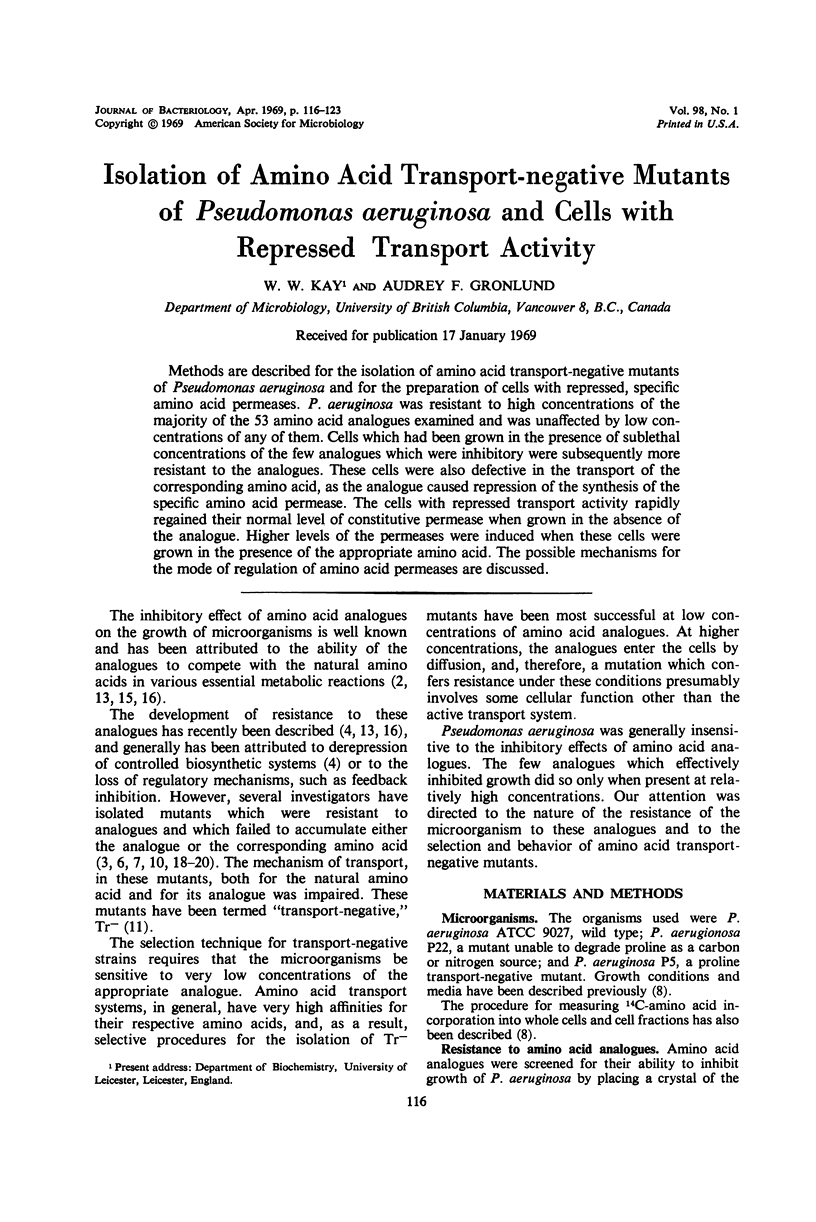
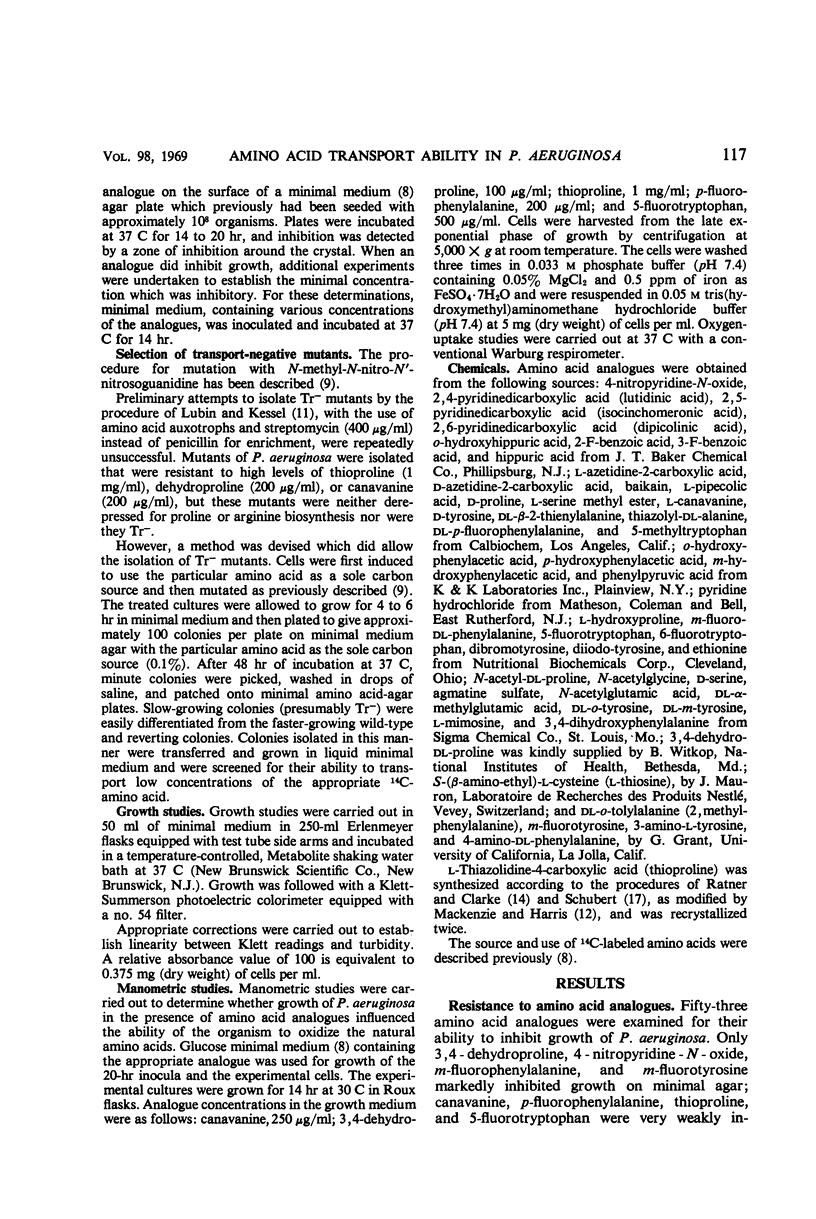
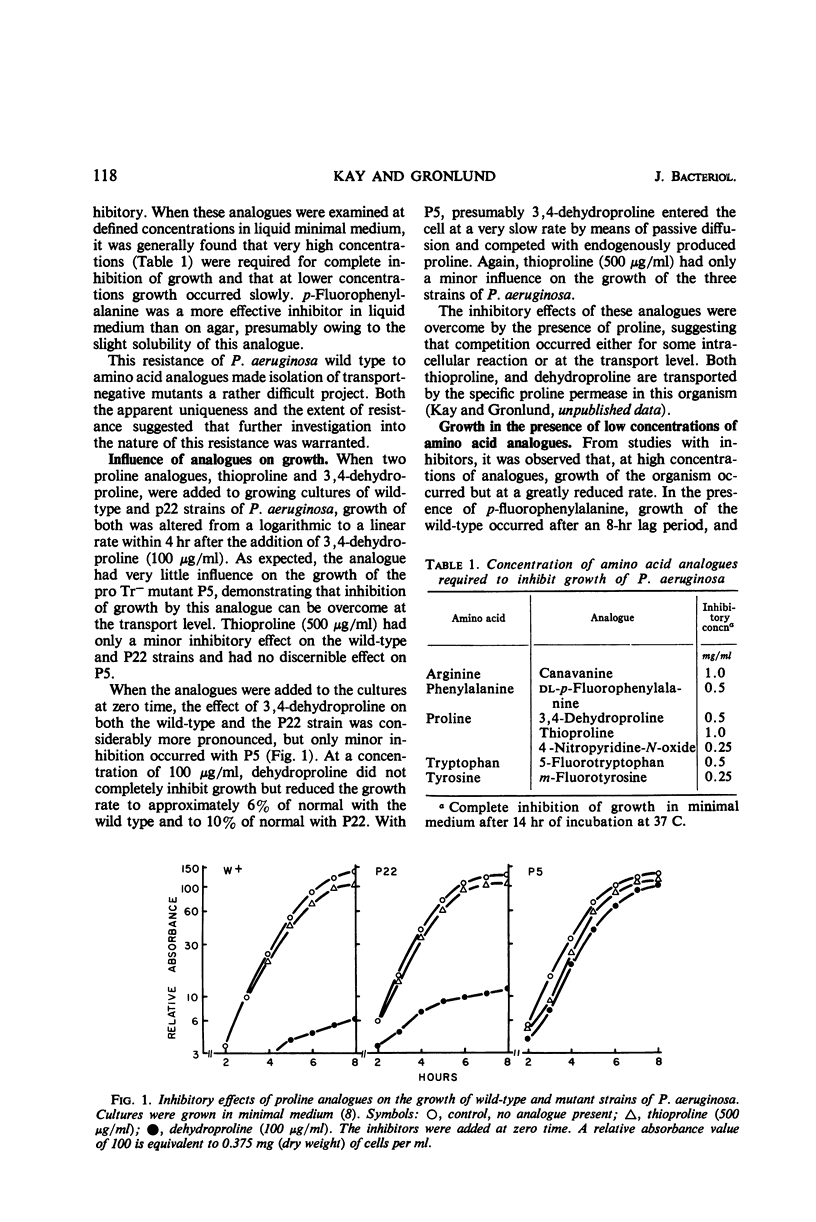

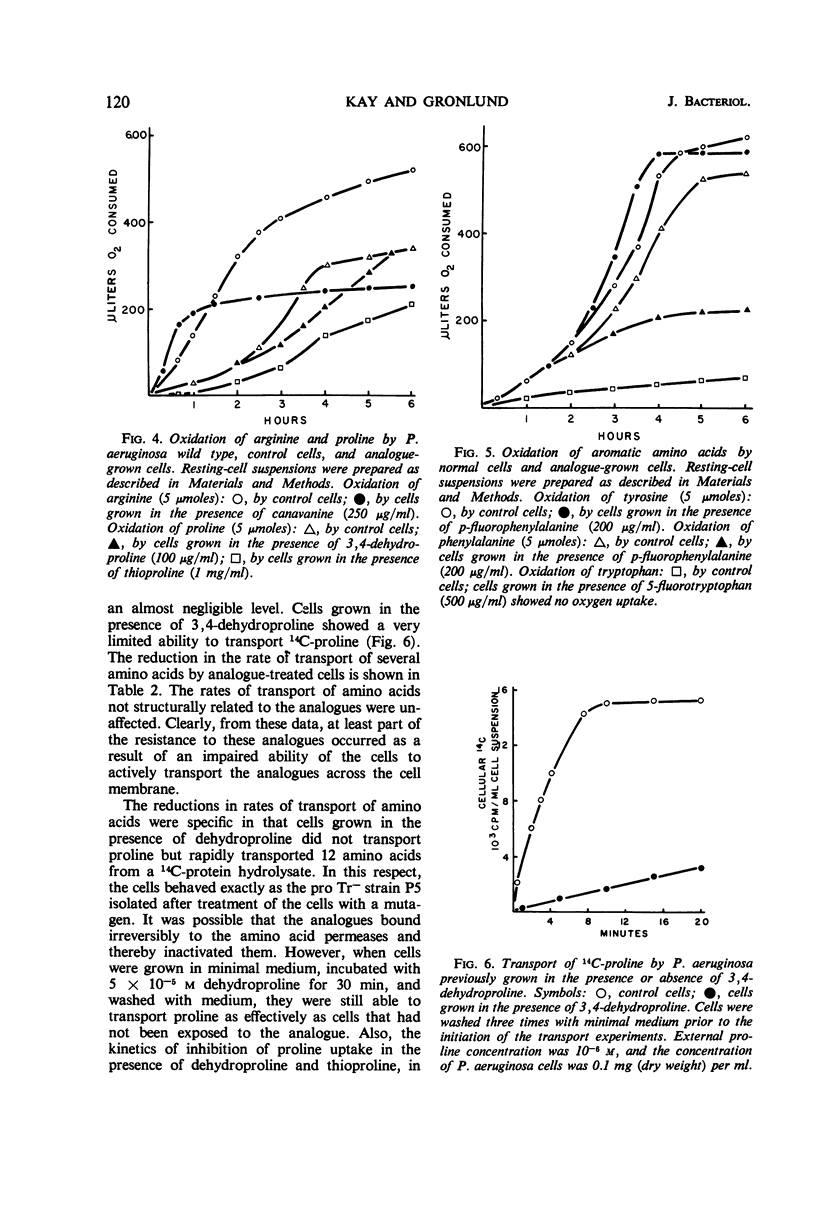

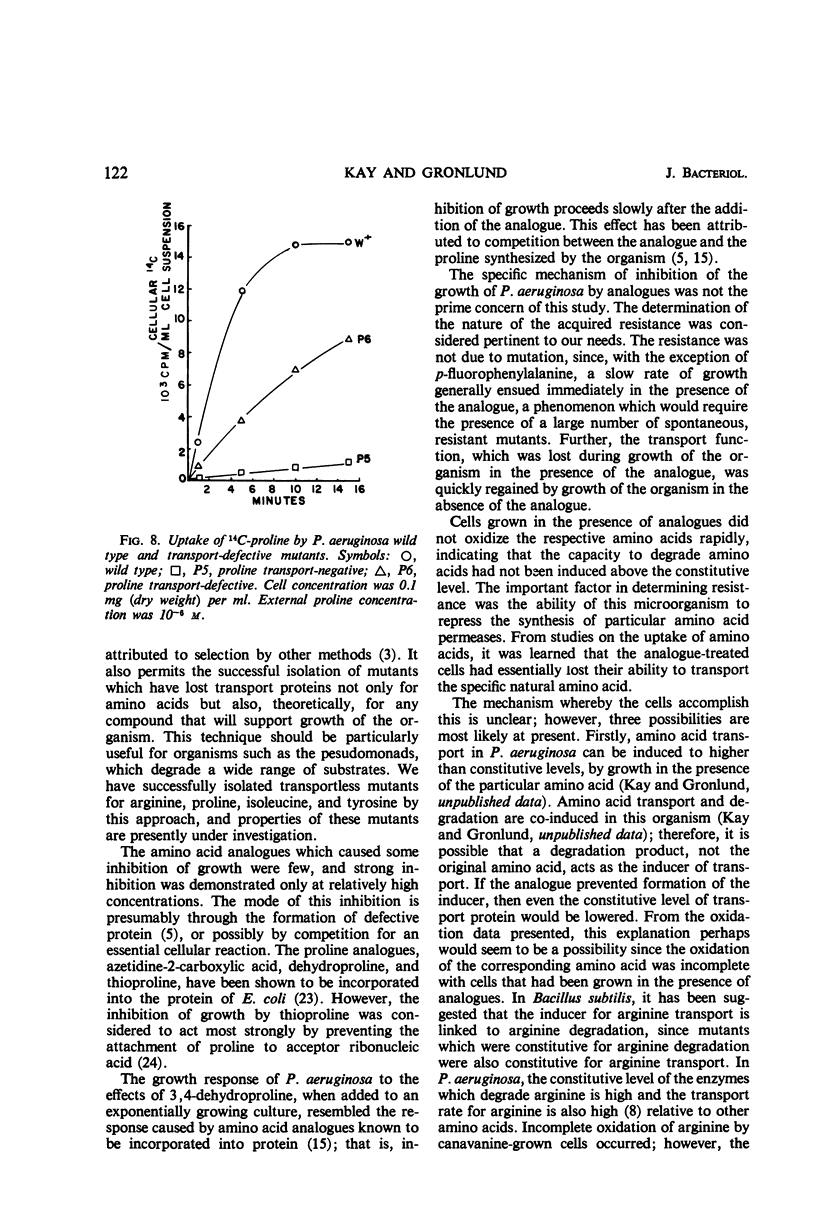
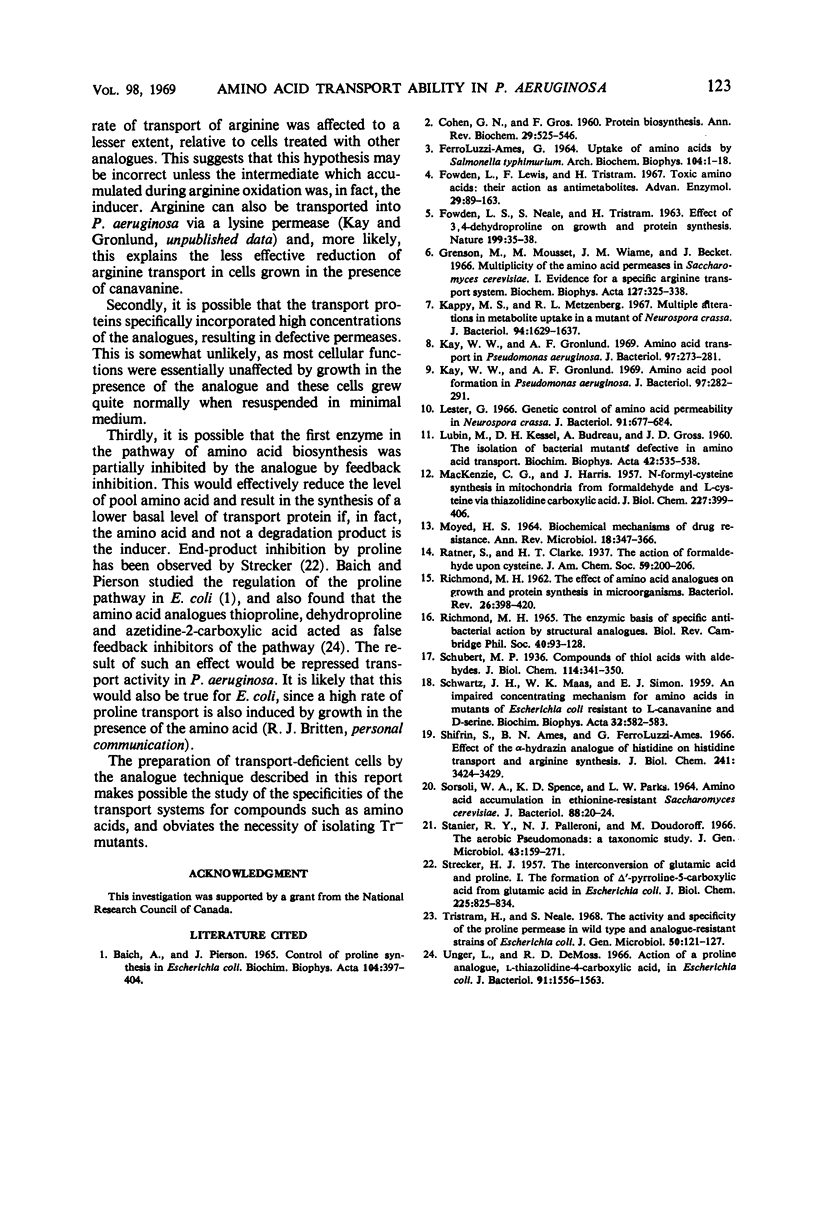
Selected References
These references are in PubMed. This may not be the complete list of references from this article.
- AMES G. F. UPTAKE OF AMINO ACIDS BY SALMONELLA TYPHIMURIUM. Arch Biochem Biophys. 1964 Jan;104:1–18. doi: 10.1016/s0003-9861(64)80028-x. [DOI] [PubMed] [Google Scholar]
- Baich A., Pierson D. J. Control of proline synthesis in Escherichia coli. Biochim Biophys Acta. 1965 Jul 8;104(2):397–404. doi: 10.1016/0304-4165(65)90345-4. [DOI] [PubMed] [Google Scholar]
- COHEN G. N., GROS F. Protein biosynthesis. Annu Rev Biochem. 1960;29:525–546. doi: 10.1146/annurev.bi.29.070160.002521. [DOI] [PubMed] [Google Scholar]
- FOWDEN L., NEALE S., TRISTRAM H. EFFECT OF 3,4-DEHYDRO-DL-PROLINE ON GROWTH AND PROTEIN SYNTHESIS. Nature. 1963 Jul 6;199:35–38. doi: 10.1038/199035a0. [DOI] [PubMed] [Google Scholar]
- Fowden L., Lewis D., Tristram H. Toxic amino acids: their action as antimetabolites. Adv Enzymol Relat Areas Mol Biol. 1967;29:89–163. doi: 10.1002/9780470122747.ch3. [DOI] [PubMed] [Google Scholar]
- Grenson M., Mousset M., Wiame J. M., Bechet J. Multiplicity of the amino acid permeases in Saccharomyces cerevisiae. I. Evidence for a specific arginine-transporting system. Biochim Biophys Acta. 1966 Oct 31;127(2):325–338. doi: 10.1016/0304-4165(66)90387-4. [DOI] [PubMed] [Google Scholar]
- Kappy M. S., Metzenberg R. L. Multiple alterations in metabolite uptake in a mutant of Neurospora crassa. J Bacteriol. 1967 Nov;94(5):1629–1637. doi: 10.1128/jb.94.5.1629-1637.1967. [DOI] [PMC free article] [PubMed] [Google Scholar]
- Kay W. W., Gronlund A. F. Amino acid pool formation in Pseudomonas aeruginosa. J Bacteriol. 1969 Jan;97(1):282–291. doi: 10.1128/jb.97.1.282-291.1969. [DOI] [PMC free article] [PubMed] [Google Scholar]
- Kay W. W., Gronlund A. F. Amino acid transport in Pseudomonas aeruginosa. J Bacteriol. 1969 Jan;97(1):273–281. doi: 10.1128/jb.97.1.273-281.1969. [DOI] [PMC free article] [PubMed] [Google Scholar]
- LUBIN M., KESSEL D. H., BUDREAU A., GROSS J. D. The isolation of bacterial mutants defective in amino acid transport. Biochim Biophys Acta. 1960 Aug 26;42:535–538. doi: 10.1016/0006-3002(60)90836-2. [DOI] [PubMed] [Google Scholar]
- Lester G. Genetic control of amino acid permeability in Neurospora crassa. J Bacteriol. 1966 Feb;91(2):677–684. doi: 10.1128/jb.91.2.677-684.1966. [DOI] [PMC free article] [PubMed] [Google Scholar]
- MACKENZIE C. G., HARRIS J. N-formylcysteine synthesis in mitochondria from formaldehyde and L-cysteine via thiazolidinecarboxylic acid. J Biol Chem. 1957 Jul;227(1):393–406. [PubMed] [Google Scholar]
- MOYED H. S. BIOCHEMICAL MECHANISMS OF DRUG RESISTANCE. Annu Rev Microbiol. 1964;18:347–366. doi: 10.1146/annurev.mi.18.100164.002023. [DOI] [PubMed] [Google Scholar]
- RICHMOND M. H. THE ENZYMIC BASIS OF SPECIFIC ANTIBACTERIAL ACTION BY STRUCTURAL ANALOGUES. Biol Rev Camb Philos Soc. 1965 Feb;40:93–128. doi: 10.1111/j.1469-185x.1965.tb00797.x. [DOI] [PubMed] [Google Scholar]
- RICHMOND M. H. The effect of amino acid analogues on growth and protein synthesis in microorganisms. Bacteriol Rev. 1962 Dec;26:398–420. doi: 10.1128/br.26.4.398-420.1962. [DOI] [PMC free article] [PubMed] [Google Scholar]
- SCHWARTZ J. H., MAAS W. K., SIMON E. J. An impaired concentrating mechanism for amino acids in mutants of Escherichia coli resistant to L-canavanine and D-serine. Biochim Biophys Acta. 1959 Apr;32:582–583. doi: 10.1016/0006-3002(59)90650-x. [DOI] [PubMed] [Google Scholar]
- SORSOLI W. A., SPENCE K. D., PARKS L. W. AMINO ACID ACCUMULATION IN ETHIONINE-RESISTANT SACCHAROMYCES CEREVISIAE. J Bacteriol. 1964 Jul;88:20–24. doi: 10.1128/jb.88.1.20-24.1964. [DOI] [PMC free article] [PubMed] [Google Scholar]
- STRECKER H. J. The interconversion of glutamic acid and proline. I. The formation of delta1-pyrroline-5-carboxylic acid from glutamic acid in Escherichia coli. J Biol Chem. 1957 Apr;225(2):825–834. [PubMed] [Google Scholar]
- Shifrin S., Ames B. N., FerroLuzzi-Ames G. Effect of the alpha-hydrazino analogue of histidine on histidine transport and arginine biosynthesis. J Biol Chem. 1966 Jul 25;241(14):3424–3429. [PubMed] [Google Scholar]
- Stanier R. Y., Palleroni N. J., Doudoroff M. The aerobic pseudomonads: a taxonomic study. J Gen Microbiol. 1966 May;43(2):159–271. doi: 10.1099/00221287-43-2-159. [DOI] [PubMed] [Google Scholar]
- Tristram H., Neale S. The activity and specificity of the proline permease in wild-type and analogue-resistant strains of Escherichia coli. J Gen Microbiol. 1968 Jan;50(1):121–137. doi: 10.1099/00221287-50-1-121. [DOI] [PubMed] [Google Scholar]
- Unger L., DeMoss R. D. Action of a proline analogue, l-thiazolidine-4-carboxylic acid, in Escherichia coli. J Bacteriol. 1966 Apr;91(4):1556–1563. doi: 10.1128/jb.91.4.1556-1563.1966. [DOI] [PMC free article] [PubMed] [Google Scholar]


